





Ofloxacin
Application instruction:
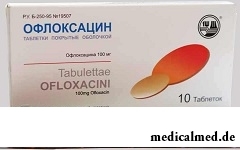 Ofloxacin – the antimicrobic medicine of a broad spectrum of activity belonging to group of ftorkhinolon.
Ofloxacin – the antimicrobic medicine of a broad spectrum of activity belonging to group of ftorkhinolon.
Form of release and structure
- Tablets, film coated: biconvex, round, a cover and a layer on cross section of almost white color (on 10 pieces in blister strip packagings, 1 packaging in a cardboard pack);
- Solution for infusions: transparent chartreuse liquid (on 100 ml in bottles of colourless or dark glass, 1 bottle in a cardboard pack);
- Oculentum of 0,3%: homogeneous substance yellow, white with a yellow shade or white color (on 5 g in tubas an aluminum, 1 tuba in a cardboard pack).
Structure of 1 tablet:
- Active ingredient: ofloxacin – 0,2 g or 0,4 g;
- Auxiliary components: cellulose microcrystallic, starch corn, talc, calcium stearate, povidone, aerosil;
- Cover: oksipropilmetiltsellyuloz (gipromelloz), titanium dioxide, talc, propylene glycol, poly(ethylene oxide) 4000 (macrogoal 4000).
Structure of 1 ml of solution:
- Active ingredient: ofloxacin – 0,002 g;
- Auxiliary components: sodium chloride, the water distilled.
Structure of 1 g of ointment:
- Active ingredient: ofloxacin – 0,003 g;
- Excipients: methylparahydroxybenzoate, пропилпарагидроксибензоат, vaseline.
Indications to use
Tablets and solution for infusions
Ofloxacin is recommended to use at infectious and inflammatory diseases of the following bodies and systems:
- Respiratory tracts (pneumonia, bronchitis);
- ENT organs (average otitis, sinusitis, laryngitis, pharyngitis);
- Skin and soft tissues;
- Skeletal system (joints and bones);
- Abdominal cavity (including digestive tract infections) and biliary tract;
- Kidneys (pyelonephritis) and urinary tract (cystitis, urethritis);
- Bodies of a small pelvis (salpingitis, oophoritis, endometritis, cervicitis, prostatitis, parametritis) and generative organs (colpitis, epididymite, orchitis).
Also drug use for treatment of a septicaemia (only solution), gonorrhoeas, clamidiosis, meningitis, and for prevention of infections at patients with disturbance of the immune status (including patients with a neutropenia).
Ointment
- Bacterial infections century, corneas and conjunctivas (bacterial ulcers and keratitis of a cornea, blepharites, blefarokonjyunktivita, conjunctivitis);
- Dacryocystitis, meibomitis (barley);
- Clamidiosis of eyes;
- Infectious complications after operative measures concerning an injury of an eye or removal of a foreign body (for prevention).
Contraindications
Absolute for all forms of release:
- Period of pregnancy and breastfeeding (lactation);
- Hypersensitivity to Ofloksatsin's components and other derivatives of a hinolon.
In addition for tablets and solution:
- Deficit glyukozo-6-fosfatdegidrogenazy;
- Reduction of the threshold of convulsive activity, including the period after a stroke, a craniocereberal injury or inflammatory diseases of the central nervous system (CNS);
- Epilepsy, including data in the anamnesis;
- Children's and teenage age up to 18 years (as growth of a skeleton is not completed yet).
In addition for ointment:
- Chronic conjunctivitis of not bacterial etiology;
- Age up to 15 years.
With care it is required to take a pill in case of atherosclerosis of vessels of a brain, disturbances of cerebral circulation (data in the anamnesis), organic lesions of TsNS, a chronic renal failure.
Route of administration and dosage
The dose and the mode of administration of drug in the form of tablets and solution for infusions are selected by individually attending physician, depending on weight of a course of an infection and its localization, and also from the general condition of the patient, sensitivity of microorganisms, and function of a liver and kidneys.
At patients with a renal failure at the clearance of creatinine (CC) of 20-50 ml/min., the single dose makes 50% from recommended (frequency rate of reception 2 times a day), or the full single dose is accepted 1 time a day. At KK <20 ml/min. the recommended dose in the first day – 0,2 g, then – on 0,1 g every other day.
Patients on haemo - and peritoneal dialysis should use 0,1 g of Ofloksatsin of 1 times a day.
In case of a liver failure the maximum daily dose – 0,4 g.
Duration of a course of therapy depends on sensitivity of the activator and a clinical picture. After disappearance of symptoms of a disease and normalization of temperature for 3 more days it is required to continue drug use.
Tablets
Pill is taken inside, entirely, before meal or during food, washing down with water.
The recommended dosing mode for adults – on 0,2-0,8 g the day divided into 2 receptions. A course of treatment – 7-10 days. It is possible to appoint a daily dose to 0,4 g in 1 reception, it is desirable in the morning.
In case of acute gonorrhea a pill is taken once in a dose of 0,4 g.
Therapy course duration: salmonelloses – 7-8 days, uncomplicated infections of the lower urinary tract – 3-5 days.
Solution for infusions
The drug is administered intravenously kapelno.
Begin therapy by Ofloksatsin with drop intravenous administration of 0,2 g within 30-60 min. In case of improvement of a condition of the patient transfer to administration of drug inside (tablets) with preservation of a dosage.
The recommended Ofloksatsin's doses depending on a disease and localization of an infection:
- Urinary tract – on 0,1 g 1-2 times a day;
- Kidneys and generative organs – on 0,1-0,2 g divided into 2 injections a day;
- Airways, ENT organs, skin and soft tissues, bones and joints, abdominal cavity, and also septic infections – on 0,2 g divided into 2 injections a day; increase in a daily dose in case of need to 0,4 g with preservation of frequency rate of reception is allowed;
- Prevention of infection at patients with the expressed decrease in immunity – on 0,4-0,6 g a day.
Ointment
Ofloxacin ointment is applied locally in ophthalmology.
It is necessary to delay carefully from top to bottom a lower eyelid of the affected eye and to enter a strip of ointment about 1 cm long into a conjunctival sac (having slightly squeezed a tube). Further to release an eyelid, to close an eye and for hypodispersion of ointment to move an eyeglobe.
The recommended dosing mode: 2-3 times a day for an eyelid put a strip of ointment 1 cm long – 0,00012 g of Ofloksatsin. For treatment of clamidiosis of eyes the number of uses increase up to 5-6 times a day.
Duration of a course of therapy should not exceed 2 weeks, for treatment of chlamydial infections the course needs to be prolonged up to 4-5 weeks.
Side effects
Tablets, solution for infusions
- Alimentary system: nausea, vomiting, a meteorism, diarrhea, anorexia, cholestatic jaundice, abdominal pains (including a gastralgia), a hyperbilirubinemia, increase in activity of hepatic transaminases, a pseudomembranous coloenteritis;
- TsNS: dizziness, headache, uncertainty of movements, spasms, tremor, numbness and paresthesias of extremities, dreadful dreams, intensive dreams, psychotic reactions, hypererethism, uneasiness, phobias, confusion of consciousness, depression, hallucinations, disturbance of color perception, increase in intracranial pressure, diplopia, disturbances of taste, hearing, sense of smell and balance;
- Musculoskeletal system: arthralgias, a tendinitis, tendosinovit, mialgiya, a rupture of a sinew;
- Cardiovascular system: collapse, vasculitis, tachycardia; for solution – a lowering of arterial pressure (ABP) (at sharp decrease in the ABP introduction is stopped);
- Integuments: petechias (dot hemorrhages), dermatitis violent hemorrhagic, vasculitis, papular rash;
- Bodies of a hemopoiesis: agranulocytosis, leukopenia, anemia, pancytopenia, thrombocytopenia, aplastic and hemolitic anemia;
- Urinary system: giperkreatininemiya, disturbance of work of kidneys, acute intersticial nephrite, increase in content of urea;
- Hypersensitivity reactions: itch, skin rash, small tortoiseshell, allergic nephrite, allergic pneumonitis, eosinophilia, Quincke's edema, fever, bronchospasm, Lyell's disease, Stephens-Johnson's syndrome, photosensitization, multiformny erythema; seldom – an anaphylaxis;
- Another: a vaginitis, superinfection, dysbacteriosis, a hypoglycemia (at patients with a diabetes mellitus);
- Local reactions (only for solution): reddening and pain in the place of an injection, thrombophlebitis.
Ointment
Local reactions: a burning sensation and discomfort in eyes, a hyperemia, an itch and dryness of a conjunctiva, a photophobia, dacryagogue, allergic reactions (in most cases these symptoms short).
Special instructions
Tablets and solution for infusions
Ofloxacin at the pneumonia caused by pneumococci is not choice drug; also it is not recommended for therapy of acute tonsillitis.
It is not necessary to use drug a course lasting more than 2 months. During therapy it is necessary to avoid influence of ultraviolet radiation, both a natural sunlight, and artificial radiation by mercury-quartz lamps and/or in a sunbed.
At emergence of side reactions from TsNS, allergic answers, pseudomembranous colitis drug needs to be cancelled. In case of the pseudomembranous colitis confirmed with kolonoskopichesky and/or histologic researches reception of Vancomycinum and metronidazole orally is recommended.
Because of the increased risk of development of vaginal candidiasis during therapy by Ofloksatsin women should not use hygienic tampons.
The tendinitis arising in rare instances can become the reason of a rupture of sinews (preferential an akhillova), especially at patients of advanced age. At the first signs of a tendinitis it is required to stop immediately therapy, to carry out an immobilization of an Achilles tendon and to address for consultation the orthopedist.
Against the background of Ofloksatsin's use the complication of a current of a myasthenia is possible, patients with predisposition have an increase of attacks of a porphyria.
As Ofloxacin interferes with Mycobacterium tuberculosis allocation, during bacteriological diagnosis of tuberculosis false-negative results are possible.
Patients with renal failures or a liver need to control Ofloksatsin's concentration in plasma. In case of a heavy liver and renal failure the risk of development of toxic reactions therefore the dose decline is necessary increases.
It is recommended to avoid reception of ethanol (alcoholic beverages) during therapy.
In pediatrics drug is used only for treatment of life-threatening heavy infections with a condition of excess of estimated clinical performance over potential risk of development of side effects when use of less toxic drugs is impossible. In that case the daily dose for children is defined depending on body weight: average – 0,0075 g/kg, maximum – 0,015 g/kg.
During therapy it is necessary to refrain from occupations potentially dangerous types of activity demanding speed of psychomotor reactions and the increased concentration of attention including from control of motor transport.
Ointment
At use of ointment carrying soft contact lenses is not recommended.
It is necessary to wear sunglasses (as development of photophobia is possible) and to avoid long effect of bright light.
Ointment Ofloxacin cannot be entered into an anterior chamber of an eye or subkonjyunktivalno.
Right after use of ointment disturbance of clearness of visual perception is possible, it can complicate process of driving of motor transport and work with difficult mechanisms. Between the beginning of such activity and use of an oculentum it is recommended to sustain an interval 15 min.
Medicinal interaction
Tablets and solution for infusions
- Antacids (foodstuff), calciferous, magnesium, aluminum, iron salts – reduce Ofloksatsin's absorption, forming insoluble complexes (not less than 2 hours between their use are required to observe an interval);
- Theophylline – Ofloxacin reduces its clearance by 25% (reduction of a dose of theophylline is recommended);
- Cimetidinum, methotrexate, furosemide and drugs blocking canalicular secretion – increase Ofloksatsin's concentration in plasma;
- Glibenclamide – Ofloxacin increases its concentration in plasma;
- Indirect anticoagulants antagonists of vitamin K – control of system of a blood coagulation is required;
- The non-steroidal anti-inflammatory drugs (NPVS) derivative of a nitroimidazole and methylxanthines – the probability of development of neurotoxic side effects increases;
- Glucocorticosteroids (GKS) – the risk of a rupture of sinews, especially at advanced age increases;
- The drugs alkalizing urine (citrates, inhibitors of a karboangidraza, sodium bicarbonate) – increase risk of development of nephrotoxic effects, crystallurias.
Solution for infusions Ofloxacin is compatible from 5% fructose solution, isotonic NaCl solution, Ringer's solution, 5% solution of a dextrose (glucose).
Ointment
In case of need simultaneous use of ointment Ofloxacin with other eye ointments / drops it is necessary to observe an interval between their use not less than 15 min., the last into a conjunctival sac enters Ofloxacin.
Terms and storage conditions
It is necessary to store Ofloxacin in the place unavailable to children. Tablets – without access of light and moisture at a temperature up to 25 °C. Solution – without light access, at a temperature of 15-25 °C not to freeze. Ointment – at a temperature from 15-25 °C.
Period of validity:
- Tablets, solution for infusions – 2 years;
- Ointment – 3 years.
Name of drug
Price
Drugstore
Ofloxacin тбл п/пл/о 200 mg No. 10, Ozone of Ltd company
25 rub.
 Network of the Moscow drugstores of IFC
Network of the Moscow drugstores of IFCAccording to opinion of many scientists, vitamin complexes are almost useless for the person.

Within several decades of our compatriots convinced that the use of butter nasty affects on...
Section: Articles about health
The stroke is one of the most widespread diseases of the person, annually in the world about 6 million cases of this pathology are registered. According to medical statistics, strokes occur almost three times more often than myocardial infarctions. Disease otno...
Section: Articles about health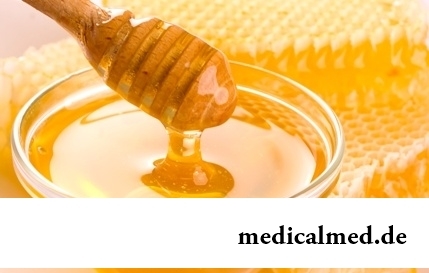
About 20% of the population of our planet have a hypertension (permanent increase in arterial pressure). This disease has an adverse effect on the standard of living, reduces working capacity, and in the absence of systematic treatment threatens with such complications as a myocardial infarction, a stroke and other heavy illnesses which can result in disability or sudden death. Most of patients for maintenance of pressure at more or less acceptable level accept appointed doctors лекарст...
Section: Articles about health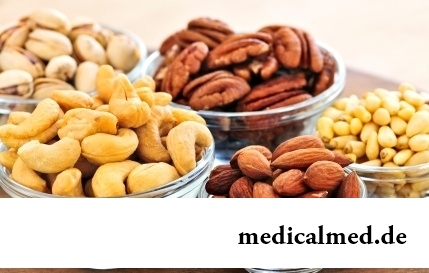
When overcomes feeling of hunger, and an opportunity to have dinner fully is absent, having a snack − small on volume comes to the rescue...
Section: Articles about health
For the last decades the diabetes mellitus of the second type became really world problem. The number of cases annually increases, and average age of patients for whom the illness is diagnosed, steadily decreases. Specialists consider that one of osno...
Section: Articles about health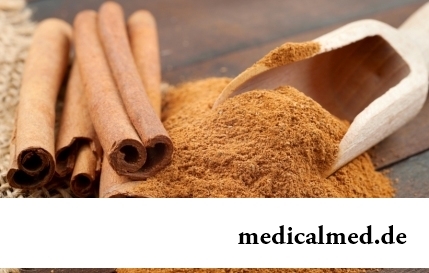
Ayurveda - the most ancient tselitelsky practice which came to us from India. It represents the doctrine about maintenance of physical, psychological and moral health of the person by means of the complex of procedures including a diet, cleaning of an organism, breathing exercises, massage, and in case of a disease - and medicinal therapy. The healers practicing Ayurveda assign very important part to spices, and at the heart of Ayurvedic drugs, as a rule, there are they. It is considered that spices not of t...
Section: Articles about health
Sooner or later hair turn gray at all. Many people try to hide these changes, returning natural color of the hair with the help about...
Section: Articles about health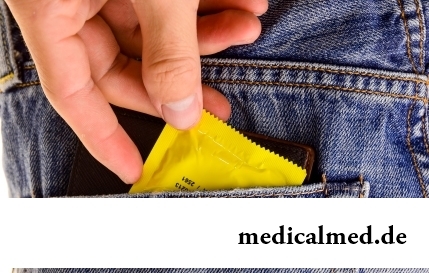
Today about 30 diseases, sexually transmitted are known. Wide circulation of these illnesses is extremely promoted by the dual attitude towards them: on the one hand, most of people know about "shameful" diseases and not a stirrup very little...
Section: Articles about health
Coffee - the tonic loved by many for the invigorating aroma and deep taste. Having the stimulating effect, coffee increases working capacity, promotes concentration of attention, fights against drowsiness and improves mood. Statistically, about 30% of inhabitants of the planet regularly use coffee, from them more than 8% are "coffee-achievers" - the persons using more than 3 cups of drink a day....
Section: Articles about health
The kid who was recently born is surrounded with love of adult family members and their cares without which the baby cannot exist....
Section: Articles about health
Tea is loved and use almost everything. This drink has tonic properties, contains the tannins capable to suppress activity of causative organisms. Recently great popularity was gained by teas with vegetable additives. Лечеб...
Section: Articles about health
The immunity role in growth of the child is invaluable. The proteins-immunoglobulins produced by immune system preserve the child against the diseases capable − owing to an organism weak still − to serve as a stressful factor, to become the reason of many complications and delays in development of the kid. If the immune system weakened, health of the child is under direct threat and needs active actions for strengthening of protective forces of an organism − preferably non-drug....
Section: Articles about health
In consciousness of our many compatriots idea that folk remedies if no more эфф strongly took roots...
Section: Articles about health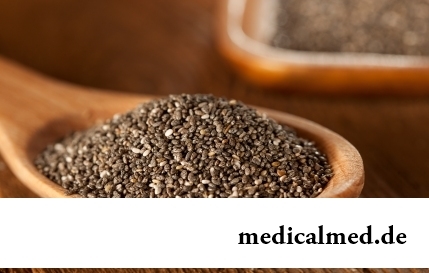
The chia plant, or the Spanish sage, is from South America. The indigenous people of the continent since ancient times used its seeds in food: small, but very nutritious kernels, in a form the reminding fasolina. Indians knew about useful properties of seeds of a chia, and applied...
Section: Articles about health
Sugar - the digestible refined product which is not of special value for an organism of the modern person. The use of sugar in food is based rather on the psychological dependence caused by desire to indulge itself with something tasty, and further and the biological, caused need of an organism for glucose as a result of big emissions of insulin in blood. Such circulation of insulin and glucose with continuous increase in portions of sugar is rather offensive and can become the reason for a narusha...
Section: Articles about health
The state of health of the person depends on many factors. One of the most important is the constant but which is not exhausting, motive...
Section: Articles about health
With age in a human body harmful substances collect. We receive them with food and water, at inhalation of the contaminated air, reception of medicines, use of household chemicals and cosmetics. A considerable part of toxins accumulates in a liver, osnovno...
Section: Articles about health
All the known slogan "Protect Men!" arose not from scratch. In a sense, the nature created men much less adapted for vital disorders, than it seems at first sight. Statistically, men are ill more often, than women, have the majority of illnesses heavier and earlier die. The situation is aggravated with the fact that our fathers, husbands, brothers and sons are not always inclined to care for the health. Partly it happens because of unwillingness of t...
Section: Articles about health
Good appetite was always considered as a sign of good health. The correct operation of the mechanism which is responsible for the need for nutritious...
Section: Articles about health
According to data of World Health Organization, the cataract is diagnosed almost for 7% of the population of Earth. The statistics of incidence is considered not full as at an initial stage the illness, as a rule, does not cause to the person of special inconveniences, and many having got sick...
Section: Articles about health
Neurosis is called pathology of a nervous system at which deviations in functioning of the highest nervous processes are observed. Most often - owing to yet not strengthened mentality - children are subject to neurosises. The unhealthy, hostile atmosphere in collective, a family, the strong and sharp shock, and also a set of other factors which negatively influence the little person who did not learn to overcome stresses yet can become premises to emergence of such disturbances....
Section: Articles about health
One of the major chemical processes happening in a human body are oxidation reactions. They go with participation of fats...
Section: Articles about health
From sexual contacts each person can test insufficiently strongly expressed sexual desire or lack of satisfaction from time to time. However when it happens regularly, it is an occasion to think about health. Most of people does not hurry an obrashcha...
Section: Articles about health
Any person who faced a disease knows that treatment costs expensive. It belongs also to consultations of qualified specialists, and to the diagnostic procedures which are not included in the list of obligatory medical services. The question of cost of medicines is not so unambiguous: almost each drug is produced several producers at once, and the price of medicine can differ many times. In such situation there is a sense to understand in what differ from each other original environments...
Section: Articles about health
Life of the modern child is extremely active and difficult. Information strain which is experienced by the school student and did not dream the pupil...
Section: Articles about health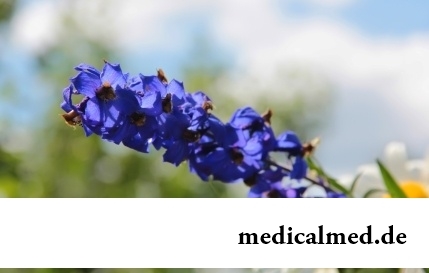
It is impossible to imagine human life in which there would be no plants. Practically in each apartment and any production room there are window plants, millions of people with pleasure are engaged in gardening and truck farming, many citizens пр...
Section: Articles about health
Musicotherapy – a treatment method which caused and causes a set of a controversy concerning its efficiency. However the facts are relentless: during the numerous researches curative impact of music on an organism was scientifically confirmed. Since then in a number of the countries the technique is included complex therapy of diseases of cardiovascular and respiratory system, dorsodynias and a backbone, psychosomatic disturbances and many other illnesses. The musicotherapy in a pedi is especially widely applied...
Section: Articles about health

